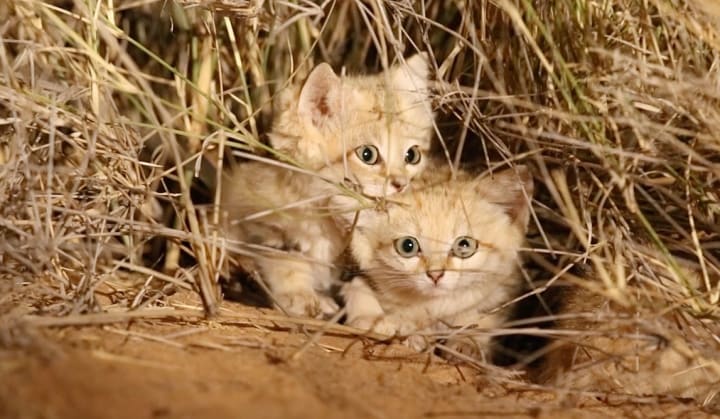Animals that exhibit shy or discreet behavior during Sex
Mating behavior

Animals exhibit discreet mating behaviors for various reasons, including avoiding predators, reducing competition, and ensuring successful reproduction. Here are detailed descriptions of discreet mating behaviors in ten different animals:
Snow Leopards

Habitat: Snow leopards live in the high-altitude regions of Central and South Asia.
Mating Behavior: These big cats are solitary and elusive, preferring to mate in remote, rugged terrains. During the mating season, which typically occurs in late winter, males and females find each other through scent markings and vocalizations. Mating itself is quick and discreet, usually taking place in secluded rocky areas to avoid detection by potential predators or human disturbance.
Red Pandas:

Habitat: Red pandas are found in the temperate forests of the Himalayas.
Mating Behavior: Red pandas are solitary except during mating season, which occurs from January to March. They communicate through subtle vocalizations and scent markings. The mating process is brief and often occurs high in the trees or dense bamboo forests, providing ample cover. This discretion helps avoid attracting predators and competitors.
Bongo Antelopes:

Habitat: Bongos inhabit dense forests in Africa.
Mating Behavior: Bongos are shy and secretive, preferring the cover of dense vegetation. During the mating season, males and females engage in a quiet courtship that includes gentle nudges and soft vocalizations. Mating occurs in the thick underbrush, hidden from predators and human observers.
Okapis:

Habitat: Okapis live in the dense rainforests of the Democratic Republic of Congo.
Mating Behavior: Okapis are very elusive and prefer the dense forest canopy for cover. Mating involves subtle communication through scent markings and occasional vocalizations. They typically mate in the deep forest where visibility is low, ensuring their activities remain hidden from predators and humans.
Sumatran Rhinoceroses:

Habitat: Sumatran rhinos are found in the rainforests of Indonesia.
Mating Behavior: These rhinos are extremely shy and prefer secluded, dense forest areas. They communicate through vocalizations and scent markings. Mating rituals are rarely observed as they occur in the dense jungle, far from human settlements. This discretion helps protect them from predators and human disturbances.
Aardvarks:
Habitat: Aardvarks are found in various regions across Africa, primarily in savannas, grasslands, and forests.
Mating Behavior: Aardvarks are nocturnal and solitary, coming together only to mate. Their mating behavior is subtle and occurs at night, often in burrows or dense vegetation. This nocturnal activity helps them avoid predators and human observation.
Platypuses:

Habitat: Platypuses live in freshwater streams and rivers in eastern Australia.
Mating Behavior: Platypuses are reclusive and spend much of their time in the water or burrows. During the breeding season, they engage in underwater courtship rituals that include circling and gentle biting. Mating typically takes place underwater, away from predators and human interference.
Sand Cats:

Habitat: Sand cats inhabit arid deserts in North Africa and Southwest Asia.
Mating Behavior: Sand cats are nocturnal and secretive, living in harsh desert environments. Their mating season occurs in the spring, and courtship involves quiet vocalizations and subtle body language. Mating often happens at night in burrows or secluded areas, making it difficult for predators and humans to observe.
Pangolins:

Habitat: Pangolins are found in various regions across Africa and Asia, in forests, grasslands, and savannas.
Mating Behavior: Pangolins are solitary and nocturnal, coming together only to mate. Courtship involves scent marking and gentle interactions. Mating typically occurs in burrows or dense vegetation, providing a hidden environment away from predators and human activity.
Hedgehogs:

Habitat: Hedgehogs are found in Europe, Asia, and Africa, in a variety of habitats including woodlands, grasslands, and gardens.
Mating Behavior: Hedgehogs are solitary and nocturnal. During mating season, males approach females cautiously, circling and sniffing them. The mating process is quiet and often occurs under the cover of night, in dense underbrush or burrows, minimizing the risk of attracting predators or human attention.
These animals have evolved discreet mating behaviors as a survival strategy, ensuring their reproductive activities remain hidden from predators and other threats.






Comments
There are no comments for this story
Be the first to respond and start the conversation.